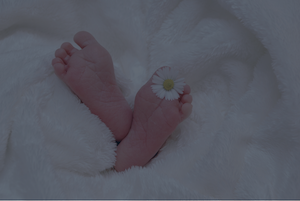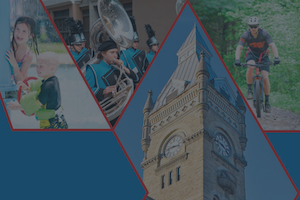Why Slippery Rock? The story of how SRU was founded in 1889
For more than 135 years, Slippery Rock University has provided accessible and affordable higher education that has enhanced the quality of life for learners in Western Pennsylvania and beyond. But why is there a public university in the small town of Slippery Rock?
Tens of thousands of students have come to know the community in northern Butler County with a peculiar name as a place to prepare for careers and develop as people, citizens and leaders. Although enrollment at SRU is more than 8,300 students, Slippery Rock’s population has never exceeded 5,000, and there are many larger communities in the region that could be home to a state-owned university.
The Pennsylvania Normal School Act of 1857 designated Butler, Beaver and Allegheny counties as one of 12 districts in the state where institutions could be created for training teachers, but no charter was issued until 1889 when a group from Centreville, which was and later officially became known as Slippery Rock, raised the money to establish a school.
“The answer to ‘Why Slippery Rock?’ was the people,” said Robert Watson, a retired SRU administrator whose great grandfather was one of the original stockholders of the Slippery Rock State Normal School Association. “The people here wanted something more for their sons and daughters. They were frugal people whose priorities were faith, family and this sense of freedom in America that gave them new life and opportunity. We just had a collection of people in and around the Slippery Rock area who had a great deal of conviction and commitment that they were doing something of value.”
Watson graduated from SRU in 1970 and worked at the university for 36 years before retiring as vice president for student affairs in 2006. He began researching the history of SRU as part of his doctoral dissertation at the University of Pittsburgh in the 1970s, and in 2011 he published a book, "Slippery Rock University: The Legend Behind the Name.”
According to Watson, the Normal School Act had provisions intended to improve the quality of education for teachers, and by extension the children they educated, to impact people in rural areas. But community members were tasked with raising money.
The Slippery Rock State Normal School Association collected funds using a subscription plan that, by May 1888, totaled $17,325. As Watson noted, that was an impressively large sum of money pledged by local citizens for a school whose future was not certain.
Construction of three campus buildings was already underway in spring 1888 as stockholders meticulously prepared for an inspection by a committee appointed by then Pennsylvania Gov. James Beaver. Local stockholders visited other approved state normal schools, including one that opened a year earlier in Clarion, and on Feb. 1, 1889, inspection committee members consisting of school superintendents in Western Pennsylvania visited Slippery Rock and indicated that they would recommend the site for a state normal school.
Just 54 days later, on March 26, Slippery Rock State Normal School conducted its first classes, enrolling 168 students including 94 women. More than two-thirds of the students were from Butler County, with the rest coming from Mercer, Lawrence, Allegheny, Beaver and Armstrong counties.
Tuition was $14 per term, $32 for room and board and 25 cents for transportation from the train station three and a half miles away.
In the announcement of the first term, the “special advantages” listed by President James Morrow included “Healthfulness; convenience; noted honesty, hospitality, and religious character of community; new, commodious buildings, thoroughly warmed and ventilated.”
There were two dormitories, North Hall and South Hall, with steam heat and natural gas light. Classes, in the Chapel, included psychology, geometry, physics, Caesar, general history and methods. Activities included lawn tennis, croquet, baseball and two-hour socials one night each week. Old Main, which was built in 1892, is the oldest remaining structure on campus, after North Hall burned down and rebuilt in 1937.
Based on its normal school heritage, SRU produced thousands of teachers for Western Pennsylvania. Like most normal schools of the era, the school evolved to offer degree programs in other disciplines to meet the demands of the local workforce.
The school was renamed Slippery Rock State Teachers College in 1927 and Slippery Rock State College in 1960, before becoming Slippery Rock University in 1983 when the State System of Higher Education was established.
Today, SRU offers more than 150 profession-focused and industry-aligned undergraduate, master’s and doctoral programs on its vibrant campus that stretches across 660 acres within Slippery Rock borough and township.
SRU’s mission has stood the test of time thanks to investment by the people in the 1880s who recognized the value of higher education for generations to come.
“The residents who invested all that money asked if they were getting any interest paid on their money,” Watson said. “The abrupt response was ‘no,’ but they all came away with the understanding that the interest that they earned was the opportunity for their children and grandchildren to gain a higher education. That was the interest that continues to be paid today.”
Justin Zackal is Associate Director of University Marking and Communication at Slippery Rock University.













